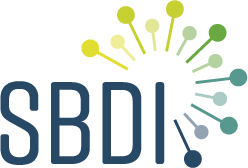Metadata, that is data describing a dataset (“information about data”), are typically associated with a published dataset. But it is also possible to describe resources with stand-alone metadata files, and in this way describe datasets that are not available online, that cannot be shared, or that can be made available by request. Publishing metadata of data that cannot be made freely available can help researchers to discover data, and it can be included in meta-analyses of datasets. The metadata can also, by itself or acting as a link to the dataset’s related data paper, enable users to evaluate the fitness-for-use of a dataset.
Metadata can be viewed and give quick information about a dataset like this example.
Resource Metadata should follow the EML standard. They are currently most easily published using the IPT, which provides good support for structuring the data according to the EML standard. The IPT has 12 different metadata forms that organize metadata entry:
- Basic Metadata,
- Geographic Coverage,
- Taxonomic Coverage,
- Temporal Coverage,
- Keywords,
- Associated Parties,
- Project Data,
- Sampling Methods,
- Bibliographic Citations,
- Collection Data,
- Physical Data,
- Additional Metadata.
For more information about how to publish metadata with IPT, see https://github.com/gbif/ipt/wiki/GMPHowToGuide#publishing-metadata-using-the-ipt.
There is some support also in SOS for Resource Metadata. Resource Metadata entered in the IPT or provided through SOS are automatically imported into the SBDI Bioatlas. The SBDI Bioatlas also keeps metadata about the institutions hat host the data resources and (in relevant cases) collections within institutions. For further information and recommendations on metadata see https://github.com/gbif/ipt/wiki/resourceMetadata and https://github.com/gbif/ipt/wiki/GMPHowToGuide.
